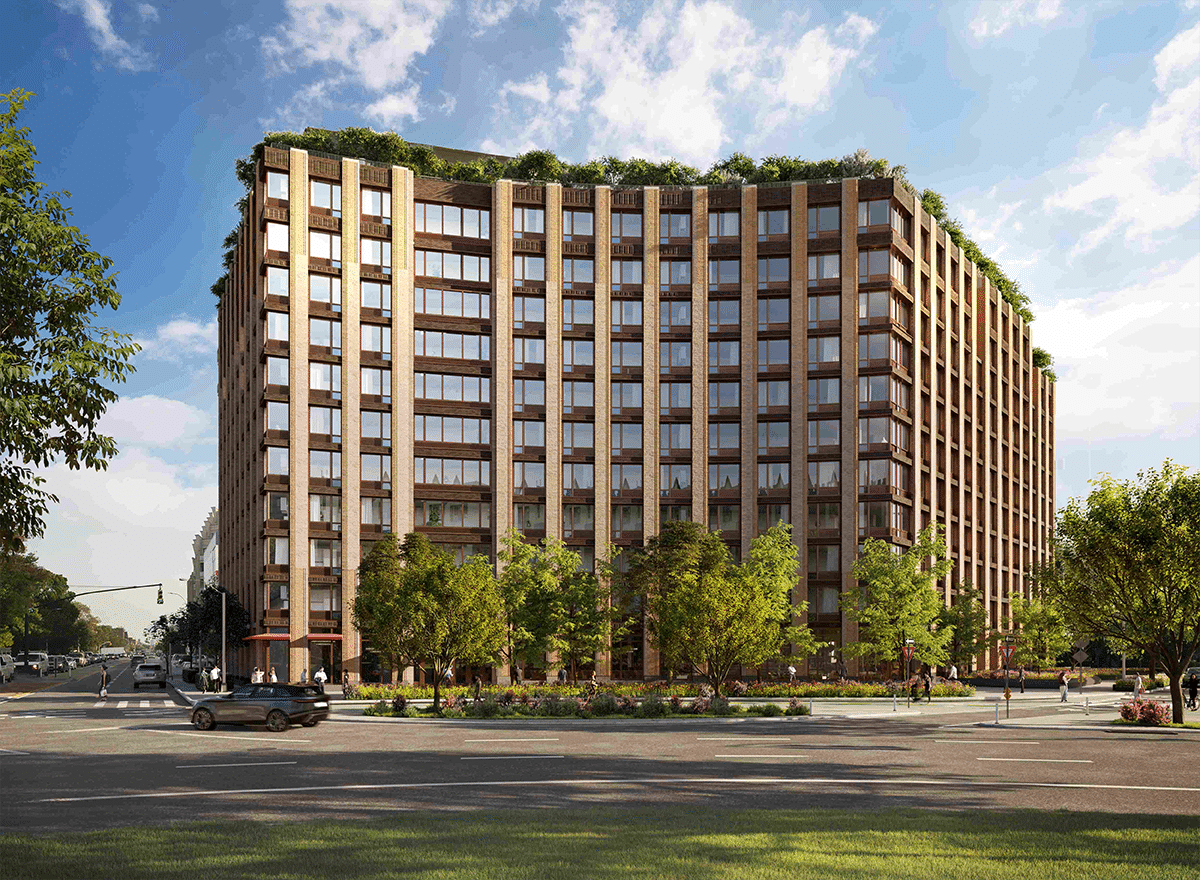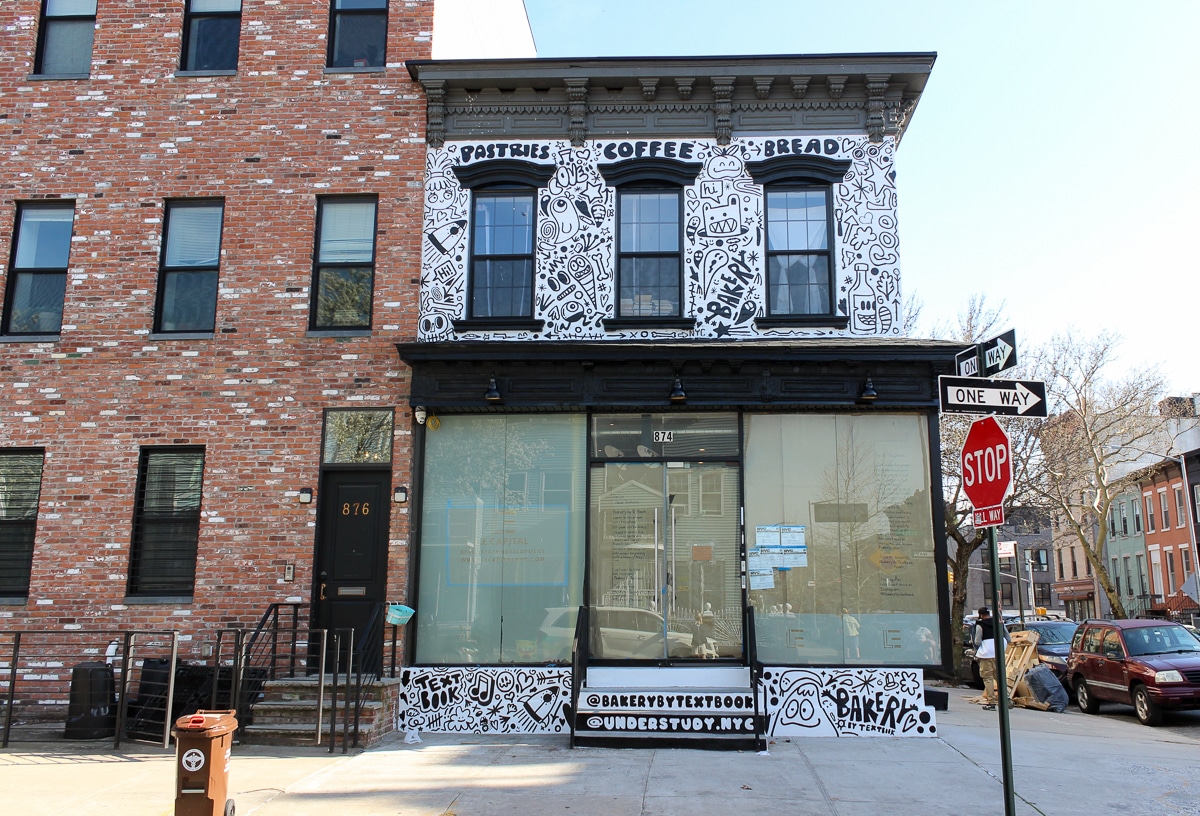Walkabout: Shine a Light, Part 5
Read Part 1, Part 2, Part 3, Part 4, and Part 6 of this story. When I moved to Brooklyn, I rented a three and a half story Neo-Grec brownstone in Bedford Stuyvesant. It was built somewhere in the late 1870’s or early 1880’s. I know now that I was spoiled. This house had had…


Read Part 1, Part 2, Part 3, Part 4, and Part 6 of this story.
When I moved to Brooklyn, I rented a three and a half story Neo-Grec brownstone in Bedford Stuyvesant. It was built somewhere in the late 1870’s or early 1880’s. I know now that I was spoiled.
This house had had only a few owners, and had never been broken up in any way, and was an intact one family house. That had some drawbacks in terms of maintenance, many of which my former landlady never really took care of, but it had some wonderful perks.
One of those perks was a wealth of period detail, including lighting. Every major room in the house had what I thought were the original lighting fixtures, pan lights in brass, with four or five sockets hanging downward from arms, with white milk glass shades dangling from short chains.

The light fixtures themselves hung pretty low, and were suspended from the ceiling, surrounded by ornate Eastlake plaster medallions. Each individual light could be turned on by a pull chain, but there was a push button wall switch.
The back parlor, the bedrooms and the hallways had wall sconces, which were rather plain, and had sockets with the same colored glass shades to match the ceiling fixtures. They faced down, and all were controlled by a pull chain at the socket.
I loved that house, and loved the lighting, but I only learned years later that the lighting was from the 1920’s, not the 1890’s, or around the turn of the century.
The house had originally been kitted out for gas. The gas pipes were still in the walls and ceilings, revealed on those rare occasions when repairs were done.

The 1920’s lights were, as in most old houses, put in the same locations as the original lights, often using the gas pipes as anchors.
A lot of us have old lighting in our houses. I’ll go out on a limb and say that for most people in New York City brownstones, as well as other old houses, like those in Victorian Flatbush, that old lighting dates back to the 1920’s.
The classic brownstone pan light, as described above, is from the 1920’s. Those sconces are, too.

These are all from that period of time when residential electric lighting mirrored the many architectural revivals that were occurring at the same time. The most important was the Colonial Revival, which brought back the sometimes broadly interpreted traditions of the late 1700’s, as interpreted by more modern eyes.
In terms of lighting, a resurgence of brass candelabras, with mock candles and shaped flame bulbs was born. Anything that had candles incorporated in it was in style, including sconces and crystal chandeliers.
If an original 18th century fixture was available for re-wiring, all the better. But that could get very expensive, and originals were rare. The first electric reproductions of Colonial lighting were born. Ironically, today we reproduce the reproductions, more often than not.

The classic pan light was born of this tradition. Somewhere around 1915, the cloth covered electric cord was perfected, which allowed for the long wires to be strung through chain and the fixture suspended at the end.
Around the same time, the push button wall switch was invented. The now familiar toggle switch was invented in 1916 by William J. Newton and Morris Goldberg. Many pan lights have individual toggles or pull chains on each arm of the fixture.
Pan lights are deceptively light, as the two pieces of the usually brass pan, are thin, and the top and bottom fit into each other, like a pot and lid, hence the name. Many of these fixtures have attached glass shades, but a lot do not, and were meant to have bare bulbs.

The glass shades were usually opaque, and often decorated with an ornamental edging, or a painted or colored glass rim.
Medieval and Tudor architecture was in vogue in the 1920’s. The new commuting suburbs of Westchester, New Jersey and Nassau Country saw the arrival of Banker Tudors, large suburban homes with half-timbered walls, rustic fireplaces, and pseudo-Medieval ironmongery, which included chandeliers and other lighting fixtures.
In the city, the Tudors took the form of Tudoresque apartment buildings for the middle class, found in many neighborhoods. The lobbies of some of these buildings still have the original sconces and ceiling fixtures, although most have been replaced.

Medieval style row houses pop up in the Kinko double duplex houses of Crown Heights, where medieval meets Mission style interior lighting. Victorian Flatbush has its own Medieval/Tudor examples, as well.
This homage to a Hollywood inspired past gave rise to the Tudoresque and medieval crown chandeliers, with the fake candles, and the sconces that match, and the Moorish/Spanish iron fixtures that often appear older homes.
Today, many people don’t like this lighting, it is seen as hokey and theatrical, and it’s not hard to find plenty of examples of this lighting on Ebay or at antique lighting stores.
Because these lights are all rather simple in actual construction, they are not hard to repair or rewire. With pan lights, the classic brownstone light for many homes, the brass can usually be cleaned, and then preserved with a coat of polyurethane to keep its shine.
Personally I love a good patina, and wouldn’t coat it. Replacement parts and replacement glass shades are also readily available, if your fixture is missing them. It’s now possible to get an exact match to the most popular shapes and colors of the period.
If you choose, there are also great reproductions available from companies such as Rejuvenation Lighting.
They are copies of the originals, and can be ordered in several finishes, sizes and configurations. Although they aren’t the real original lights, they are often the earliest lights in a house, and are still as attractive as they once were.
You no longer have to pull each individual chain to turn on the light fixture, but if you’d like, you can still use push button switches. They make those again, too.
I miss that house, and those great pan lights and sconces. What a wonderful introduction they were for me, to all the variety and beauty that can be had found in a Brooklyn Brownstone.
Next time: Wrapping it up: catching up with historic lighting.









I mean likewise I am really enjoying this series. Don’t like Tudor lights — except in Tudor houses, of course.
I really like the candle sconces with clip on shades. They always seem so elegant.
Likewise!
some of the old Tudor fixtures were over-the-top. They are my favorites. Especially the ones that look like they come from the Wicked Witch of the West’s castle.
I am really enjoying this series. Thank you MM!!!